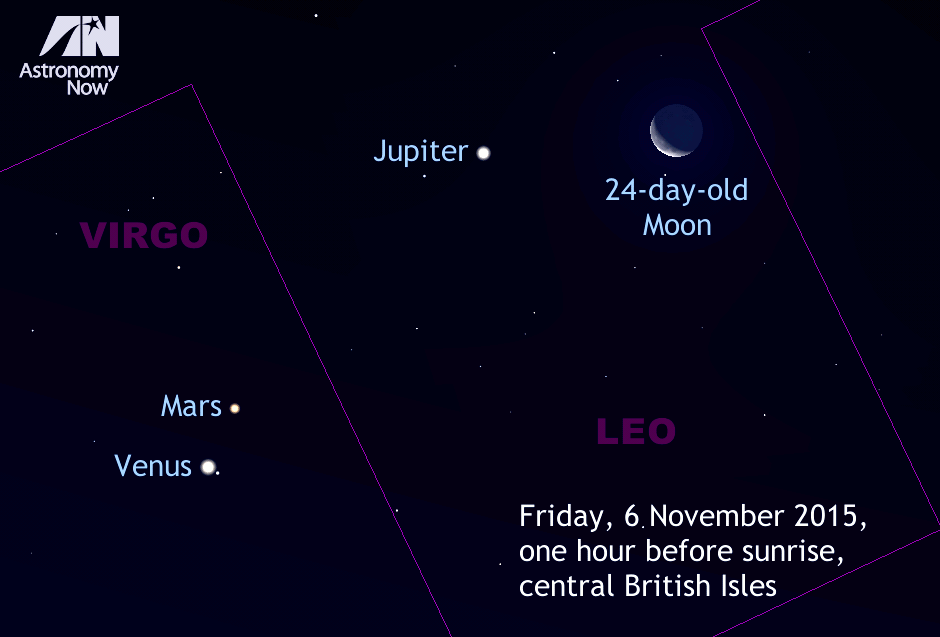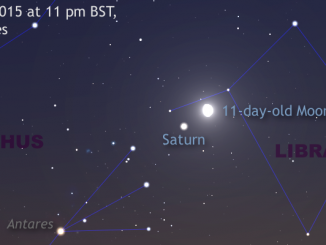
Taking the Friday, 6 November event first, if you look to the southeast shortly before 6am GMT you will see the waning crescent of a 24-day-old Moon just 4.5 degrees to the right of Jupiter, meaning that both would fit nicely in the field of view of a typical 10×50 binocular. On this morning Jupiter’s moon Io emerges from occultation behind its parent planet at 3:52am, so by the time nautical twilight starts all four Galilean moons will be on show. From east to west, the arrangement will be Ganymede, Io, Jupiter, Europa then Callisto. In a quality telescope under calm skies, Jupiter’s Great Red Spot will be approaching the planet’s meridian until twilight gets too bright. Jupiter is 548 million miles (882 million kilometres) away from Earth at this time.
If your sky’s clear to the southeast around 5:30am BST on Saturday, 7 November the 25-day-old lunar crescent will be just 3¼ degrees to the right of dazzling Venus, while Mars (1.9 degrees to the upper right of Venus) completes a triangle that will comfortably fit in the field of view of typical binoculars. In a telescope, magnitude -4.3 Venus (117.1 million kilometres away) is 57 percent illuminated and spans 21.3 arcseconds, so it would require a magnification of 80x to make it’s disc appear the same size as the Moon to the naked eye. Magnitude +1.7 Mars has a miniscule disc 4.3 arcseconds wide owing to its great distance of 200.6 million miles (322.8 million kilometres).
Inside the magazine
You can find out more about this month’s planetary peregrinations in the November edition of Astronomy Now in addition to a full guide to the night sky.
Never miss an issue by subscribing to the UK’s biggest astronomy magazine. Also available for iPad/iPhone and Android devices.




